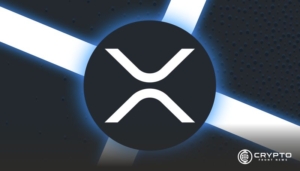- The outflow/inflow ratio has decreased to 0.9, pointing to a solid accumulation phase and stronger long-term holding behavior on an aggregated level of the market.
- A lot of companies and governments are adopting Bitcoin in their treasury plans, and this provides more proof of Bitcoin’s developing status as a digital store of value.
- Long-term holders are increasing, showing sustained spot market demand as exchange outflows continue to dominate current crypto movement trends.
Bitcoin outflows are still higher than Bitcoin inflows, indicating a market that’s primarily based on long-term investor conviction. The trend suggests a preference for a hold strategy with increasing adoption by corporations and governments.
Institutional Adoption Supports Outflow Dominance
In a recent update, Darkfost_Coc emphasized the ongoing strength in Bitcoin’s spot market. According to the post, outflows remain the dominant movement across exchanges. This trend suggests that market participants are withdrawing assets to self-custody, a behavior commonly associated with long-term holding.
The post also noted that major corporations and governments are steadily embracing Bitcoin. As the asset becomes more embedded into treasury strategies, its role as a store of value continues to grow. This pattern reinforces the current market structure, where institutional confidence helps maintain support beneath the price.
This behavior is not typical during uncertain market phases, where inflows often rise in preparation for selling. Instead, Bitcoin’s recent trends show maturing market dynamics.
Outflow-to-Inflow Ratio Drops Below 1
According to the tweet, the monthly outflow/inflow ratio recently dropped to 0.9. This level has not been registered since the 2023 bear market. When this indicator is below 1, it usually suggests there are more outflows than inflows reinforcing buyer demand and long-term positioning.
Times when the ratio rises above 1.05 typically come with selling pressure, these times are often during corrective cycles, or pullbacks in the greater market. Currently, however, the ratio remains well below this threshold.
The sustained presence of long-term holders, as noted by @Darkfost_Coc, supports a continued outflow trend. This behavior signals ongoing accumulation, which often stabilizes price volatility over time.
Market Structure Shows Signs of Long-Term Maturity
The present outflow trend coincides with a growing number of long-term holders entering the market. This pattern supports a maturing investor base. In recent months, such structural changes have helped maintain price stability amid broader economic uncertainty.
As outflows continue to dominate, Bitcoin’s position within global finance appears to be shifting. The move toward treasury integration by major institutions further strengthens the asset’s role beyond short-term speculation.
With market participants withdrawing more Bitcoin than they deposit, current behavior suggests a lasting shift in investment strategies.






